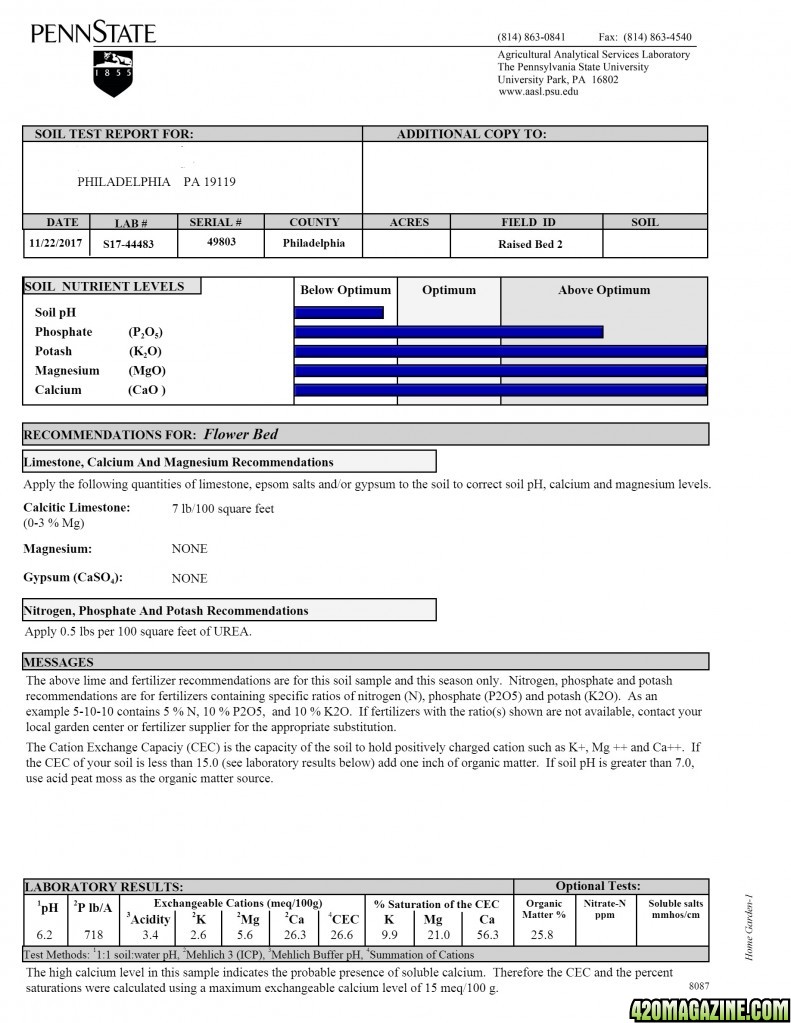Conradino23
Well-Known Member
D - why are you cutting the fish bone meal?? I would think its very similar to Crustacean meal that I use. I actually add fish bone meal to my compost bins. Then use that compost in my soil mix.
Conrad
Interesting you asked about the Ca:Mg ratio. I was always trying to reach about 6:1 or more but my current mix is only like >3:1 Not even sure why my Mg level is so high?? For Ca I use Oyster Shell flour/crustacean meal/Gypsum.
Maybe the rock dust I use has a lot of Mg in it??
That was probably 20 flower rounds ago too. I do add in some Ca from time to time with my amendments.
Soil PH @ 6.3 is good for me. Sweet spot or close enough.
This on is the current soil I'm in now mixed it in 2017:

That might a problem for you. The lowest ratio I know to be working for OG strains is 6:1, but 7:1 for most of the strains. You should add more calcium carbonate or push more in drenches, especially in bloom.



